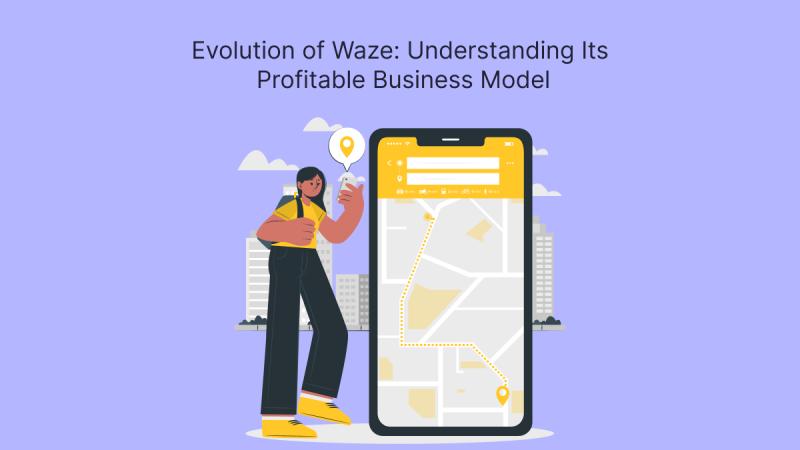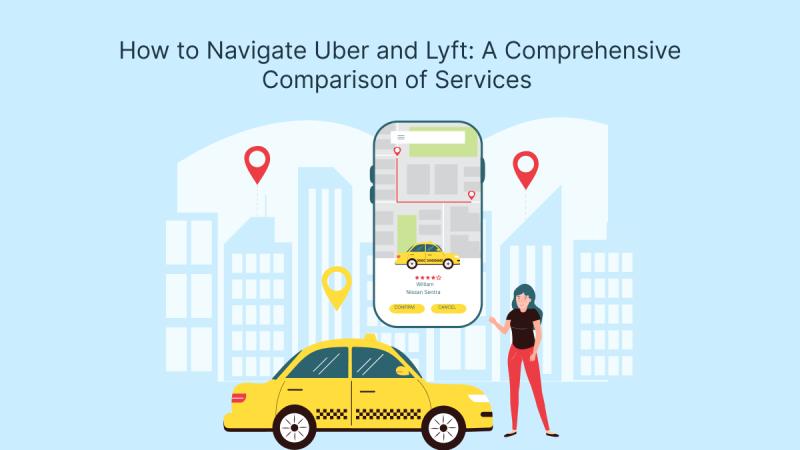Evolution of Waze: Understanding Its Profitable Business Model

Waze has emerged as one of the most popular navigation applications in the world, providing users with real-time traffic updates and route optimization. Understanding Waze's evolution and its profitable business model provides insights into how the app maintains its competitive edge and generates revenue. Discover the evolution and profitability of Waze business model. Learn how Waze turned into a success story by leveraging its unique business strategy. This blog post explores Waze’s journey, key features, and the strategies that contribute to its financial success.
The Origins of Waze
Community-Driven Development
The original concept revolved around creating a navigation application that utilized community-driven data. By allowing users to contribute information about road conditions, traffic jams, and accidents, Waze aimed to provide more accurate and up-to-date navigation than traditional GPS systems. This innovative approach leveraged the power of crowdsourcing, enabling users to actively participate in improving the app's functionality.
Initial Challenges and Growth
The early years of Waze were not without challenges. Competing against established players like Google Maps and TomTom, Waze had to find a way to differentiate itself. The company's focus on community engagement and user-generated content began to pay off as more users joined the platform, contributing valuable information.
Acquisition by Google
Expanding Reach and Resources
This acquisition provided Waze with the resources and infrastructure to enhance its features and expand its reach. Being part of Google allowed Waze to access advanced technology, improve its data analytics capabilities, and integrate its services with Google Maps. This partnership solidified Waze's position in the navigation app market and opened up new revenue streams.
Retaining the Unique Identity
Despite the acquisition, Waze has retained its unique identity as a community-driven platform. The app continues to prioritize user engagement and feedback, ensuring that the community remains at the forefront of its development. This balance between being part of a tech giant and maintaining its grassroots origins has contributed to Waze's ongoing popularity.
Key Features of Waze
Real-Time Traffic Updates
One of Waze's standout features is its ability to provide real-time traffic updates. Users can report incidents such as accidents, road closures, and traffic jams, which are then shared with other users almost instantly. This feature helps drivers avoid congested routes and find faster alternatives, enhancing the overall navigation experience.
User-Generated Content
Waze thrives on user-generated content, enabling users to actively participate in improving the app. The gamification aspect encourages users to contribute by awarding points and badges for reporting incidents and completing map edits. This not only boosts user engagement but also ensures that Waze has access to a continuous stream of real-time data.
Understanding Waze's Profitable Business Model
Location-Based Advertising
A significant revenue stream for Waze comes from location-based advertising. Businesses can create targeted ads that appear to users as they navigate through specific areas. This hyper-targeted advertising model ensures that businesses reach potential customers who are actively searching for services nearby.
Sponsored Locations
Waze offers sponsored locations, which allow businesses to promote their services directly within the app. For example, as users approach a gas station or restaurant, they may see promotional offers or advertisements for that business. This approach not only drives traffic to businesses but also enhances the overall user experience by providing relevant information.
Partnerships and Collaborations
Waze actively seeks partnerships with local businesses and national brands to enhance its advertising capabilities. By collaborating with businesses, Waze can offer exclusive deals and promotions, further incentivizing users to engage with the app. These partnerships also help Waze diversify its revenue streams and maintain profitability.
Collaborations with Ride-Sharing Services
Waze has formed collaborations with ride-sharing services such as Uber and Lyft, allowing drivers to seamlessly switch between apps while navigating. This integration not only provides additional value to users but also generates revenue for Waze through partnership agreements. By working with these platforms, Waze enhances the user experience and solidifies its position in the transportation ecosystem.
Data Monetization
Waze collects a wealth of data from its users, including traffic patterns, road conditions, and user behavior. This data is invaluable for urban planners, municipalities, and businesses looking to understand traffic trends and improve their services. Waze can monetize this data by selling insights and analytics to third parties.
Traffic Reports for Government Agencies
Cities and local governments are increasingly relying on real-time data to improve traffic flow and reduce congestion. Waze can provide comprehensive traffic reports that help municipalities make informed decisions about infrastructure improvements and public transportation options. By partnering with government agencies, Waze not only generates revenue but also positions itself as a valuable resource for urban development.
The Future of Waze
Expanding Features and Functionality
As the navigation landscape continues to evolve, Waze is likely to explore new features and functionalities to meet user demands. This could include enhanced route planning, personalized travel insights, and advanced navigation tools. By continuously improving its offerings, Waze can cater to diverse user preferences and remain competitive in the market.
Embracing Emerging Technologies
Waze is also well-positioned to embrace emerging technologies such as artificial intelligence (AI) and machine learning. These technologies can help enhance traffic prediction accuracy, improve user personalization, and provide smarter routing options. By leveraging these advancements, Waze can stay ahead of the competition and continue to deliver value to its users.
Conclusion
The evolution of Waze from a community-driven project to a leading navigation app owned by Google is a remarkable journey. By focusing on user-generated content, real-time traffic updates, and innovative advertising strategies, Waze has established a profitable business model that sets it apart from competitors. The app's ability to adapt to changing market dynamics and embrace new technologies ensures its continued relevance in the ever-evolving landscape of navigation services. Discover the evolution of Waze and unlock its profitable business model in our in-depth analysis. Learn how this on-demand app development company revolutionized the navigation industry.
As Waze moves forward, its commitment to enhancing user experience and exploring new revenue opportunities will be key to sustaining its growth and profitability. Understanding Waze's evolution and business model can provide valuable insights for entrepreneurs and businesses looking to thrive in competitive industries.









Comments